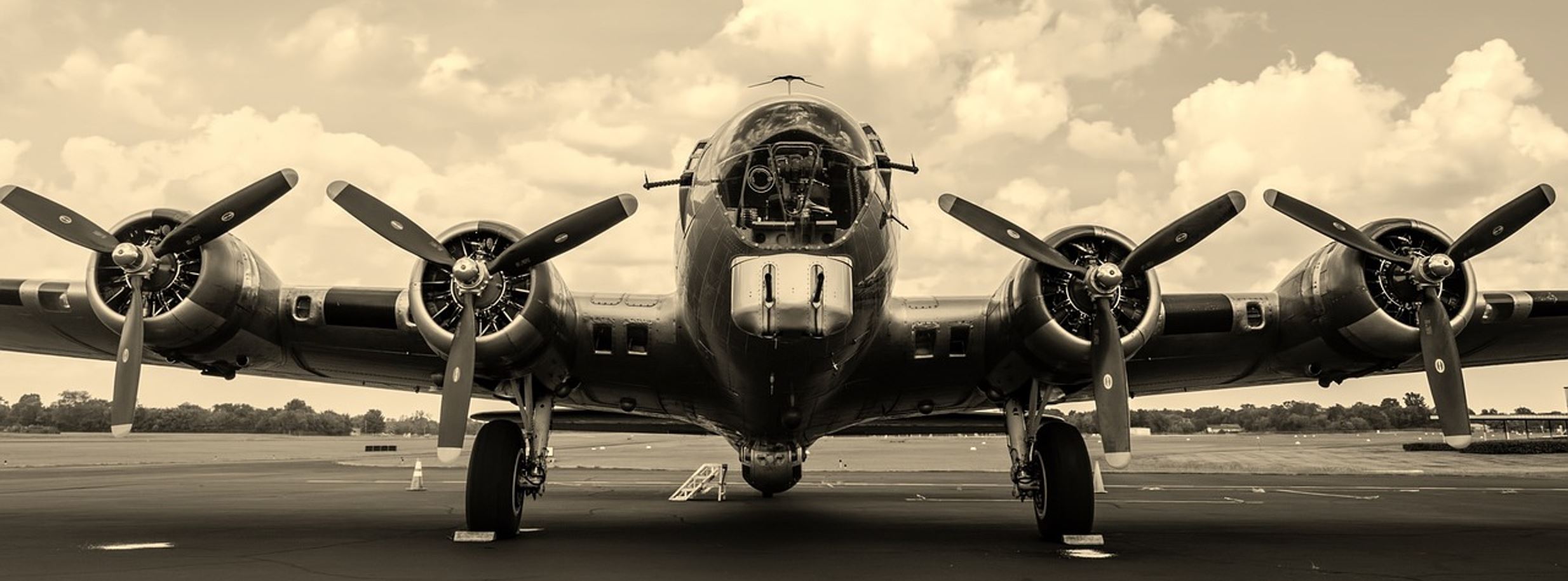
Photo source:
https://pixabay.com/photos/airplane-world-war-ii-sepia-2507504/
World War II was a devastating time for humanity. Resulting in the death of almost 75 million people, the war ravaged countries and led to a level of death and destruction the world had never experienced before. Despite this chaos, civilization continued to advance.
On the scientific, medical, and technological side of the war, things were moving rapidly. Primarily to aid the war, scientists and inventors internationally put their heads together to create
equipment
and systems that would give their allies a leg up.
Their inventions changed the world almost as much as the war. Read on to discover some of the most important of these inventions?including some that seem unlikely to have been the efforts of a global war.?
Penicillin
Commonly used in today’s medicine,
penicillin has not been around commercially for as long as many believe. Discovered in 1928 by Scottish scientist Alexander Fleming, the drug was only used in small quantities and didn’t receive much attention. It was only in 1941 that human trials using the drug even began.
During the war, however, the power and efficiency of the drug was cast into the spotlight. During a time when superficial scratches could lead to fatal infections, the US government paid more attention to how penicillin could eradicate infections and help alleviate pain in wounded soldiers.
After Australian scientist Howard Florey seemingly perfected it, the drug was mass-produced. The US alone created 2.3 million doses for use by the Allied troops. Since then, it has been found in thousands of general antibiotics and is now one of the most common infection killers internationally.
Radar
Radar is used in many places in the modern world. From speed enforcement cameras to car parking sensors and airport landing guides, it has revolutionized how we detect oncoming collisions and provide guidance.
Development of radar
first began as a weapon to shoot beams of radar to incapacitate pilots, but scientists soon discovered this was not viable. They did, however, note that they were receiving a bounce-back from the target at which they were shooting the beams?similar to sonar.
With this information in hand, the expansion of radar accelerated at a rapid pace. By 1939, a radar station network was built for detecting incoming enemies across the UK. This helped the Allied forces detect planes and boats coming in from enemy territories and act accordingly.
Electronic Computers
For most of us, our everyday lives revolve around computers big and small. The origin of these is hard to trace back to war, even though World War II was instrumental in our access to them today.
While the term “computers” initially referred to a collection of women doing complex calculations by hand, during the war, the British began looking for a way to break the German’s Enigma cryptography language. Alan Turing discovered the perfect way by creating an electro-mechanical machine titled the Bombe.
Although far removed from what we’d consider a computer today, the creation of the Bombe was the catalyst that started massive interest in the technology. This led to the birth of modern-day computing, the internet, and the ability to connect via social media, shop online, or even gamble on sites like
casinos.com
.
Jet Engines
In 1930, while English engineer Frank Whittle worked for the Royal Air Force, he filed a patent for a design termed the jet engine. However, the concept was considered strange and gained little traction among both the air force and the air travel industry.
Nine years later, however, Germany performed its first test flight using a similar design only a few days before invading Poland. The UK government quickly realized the merit of the design and began manufacturing aircraft based on Whittle’s initial designs.
In 1941, the first
Allied forces craft took flight
using jet engines, and aviation, as it was known, changed forever. Since then, jet engines have become a staple in modern avionics because they are faster and allow planes to travel longer distances.
Atomic Bomb
We would be remiss not to mention one of the most significant inventions in human history: the atomic bomb. Capable of wreaking incredible havoc through its awe-inspiring destructive power, the bomb is not only one of the most complex inventions of the war but also one of the primary reasons the war ended.
The bomb, which cost more than $2 billion to develop and required more than 125,000 workers, was created under a program called the Manhattan Project. Under Dr. Oppenheimer’s watchful gaze and supervision, the bomb was developed while many others, including famed physicist Niels Bohr, continued to say it was impossible to produce.
In 1945, the first test of the weapon was conducted. Titled Trinity, the test was successful and unleashed the most powerful tool of warfare ever seen. After two bombs were dropped a month later, production of bombs has continued, but the world has been lucky never to have one used in active warfare again.?
Ballpoint Pens
Working as a journalist during the war, Laszlo Biro became increasingly irate at his fountain pen, which continuously smudged and smeared. After visiting a printing store that used ink that appeared to dry almost instantly, he got the idea to use that ink in a more convenient and portable manner.
Working alongside his scientist brother George Biro, Laszlo filed a patent for the world’s first ballpoint pen in 1938. After some testing, the duo perfected the pen and created a tool that has become a staple internationally in almost every home and business.
The British Royal Air Force was one of the first adopters of the pen after its invention. Because reservoir pens (the closest alternative at the time) were consistently leaking when used by pilots, the RAF placed an order for 30,000 of the Biro brothers’ pens. This allowed pilots to take notes, mark coordinates, and write letters at high altitudes?all instrumental tasks.